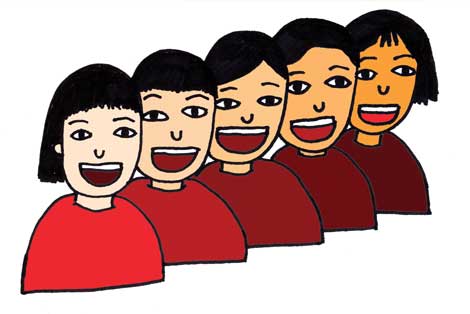Anuradha Vikram is a transcultural critic, curator and educator who’s worked with a variety of contemporary artists from around the world and I’m not. So I invited her into my column to compensate for my ignorance.
ZAK SMITH: So: “Asian Art”?
ANURADHA VIKRAM: I don’t think “Asian” is a meaningful category. There are certainly commonalities among some Asian artists from different countries that merit exploration in thematic group shows or critical essays. Shows where artists are selected based primarily on geography rarely have something meaningful to say about the artwork because the premise is too vague and shallow. A show about Buddhist phenomenology in postconceptual art on the other hand could have artists from throughout Asia or from a more concentrated region like Southeast Asia while focusing on something that actually interests the artists included in the exhibition. No one walks around thinking “I’m from Asia.”
On the contrary, one consistent factor is that the distinction between Asian and Asian-American or Asian-European can be quite tenuous, with artists working in multiple locales, and claiming multiple nationalities. We tend to hear a more simplified narrative based on where an artist is currently living, which leads to situations where an LA-based artist doing modestly well, for example, is suddenly getting more high-profile shows because she relocated to Mumbai and is overnight an “Indian” artist.
Would you recommend artists pretend to be from China or another country that’s hot right now?
It is not my professional recommendation, no, but if you tried it, I would certainly understand why. China is oversaturated though. If you pretended to be from Nigeria, Malaysia, Indonesia or Turkey, you could make it big in a few short years as any one of those is primed to be the next hot market. Kind of like how Francis Alÿs moved to Mexico City and got famous as a Mexican artist even though he’s from Belgium. You might have to move there for it to really take.
Have you noticed the “People Lined Up Smiling” motif in Chinese art?
I presented on a panel with JP Park, who talked about stereotypes in Chinese contemporary art. Apart from images of Chairman Mao, he ranked those of people lined up and smiling as the most popular “political” motif deemed acceptable by Chinese authorities for contemporary artists to use. I understand that the grimace is meant to represent the affective or emotional investment expected of the Communist subject, without which correct behavior will only get you so far. Americans and Europeans supposedly think these images are challenging the Party establishment but in fact they are quite okay so long as they are safely directed toward regimes past.
He named four key tropes: Mao, laughing/smiling, and two more. My memory is fuzzy but I want to say it was Coca-Cola/consumerism and earnest farm laborers. All focused on the Communist/Capitalist dichotomy rather than acknowledging the more complicated situation in China today, and none addressing democracy
Any tendencies you see recurring in different countries or regions?
Lots. In painting, South Asians seem to like impasto and all-over composition in abstraction. I often get the sense that Indian abstraction is preoccupied with double-vision or the opening of a third eye (in Shaivite terms). SH Raza and VS Gaitonde set the parameters for this in mid-century. In figuration, South Asians favor Expressionism and photorealism, perhaps owing to the special relationships enjoyed with Germans during the Romantic period, on the one hand, and British during the Picturesque, on the other. In Pakistan and Iran, you see a lot of painters trained in Mughal miniature techniques applying those at varying scale and to contemporary subjects. In general, Asia produces a lot of work using traditional (folk or classical) techniques applied to present-day political themes. Chinese painters are either figurative or working in an abstract mode derived from traditional brush painting.
Sculpture is often very large scale, which speaks to the emergence of industrial and engineering powerhouses throughout the region. Asian sculpture is high-gloss for the most part and very commodity-fetish. Some artists like Huma Bhabha deliberately work against that but I still think they are the exception. Even Ai Weiwei favors the finish fetish.
In new genres, the most exciting work is consistently being commissioned by the Sharjah Biennial. They seem to favor research-based works in film and installation with a documentary aspect, often dealing with postcolonial themes.
One more trend: Korean futurism (Hyungkoo Lee, Moon Kyungwon, Jeon Joonho) is pretty great, interesting take on the posthuman.


